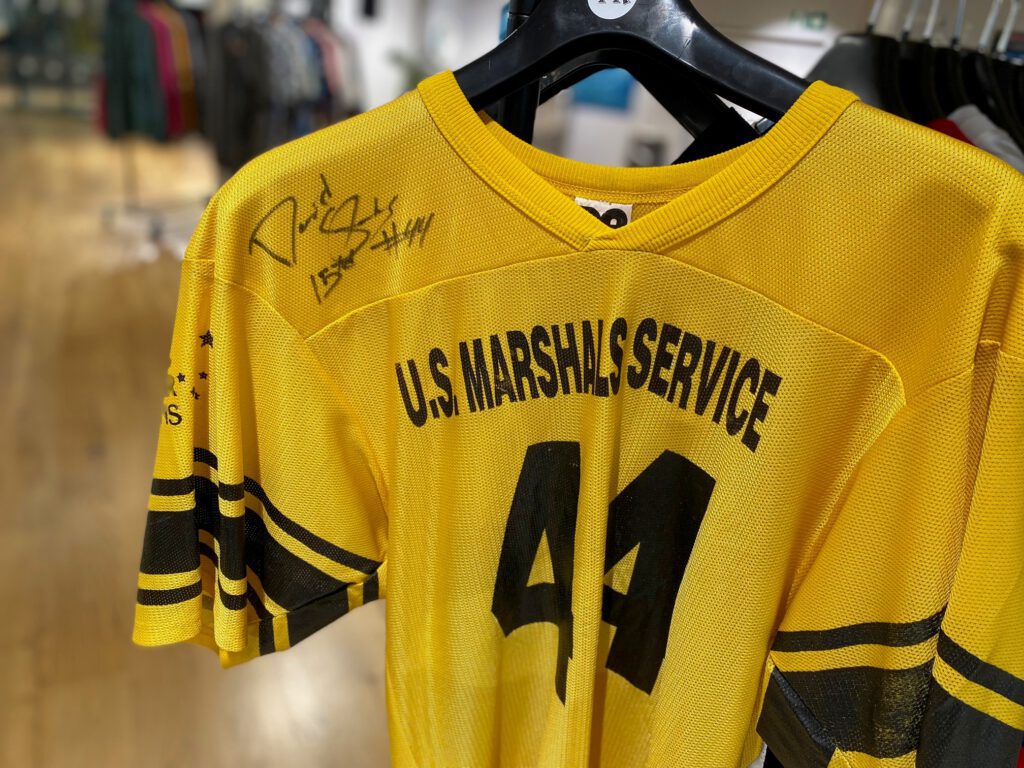Photomatching has long been—and still is—considered one of the most reliable ways to verify whether a jersey, shoe, or other item was actually used in a game. Trusted companies like the MeiGray Group rely on this method alongside their official team partnerships, and even auction house giants like Sotheby’s—now entering the sports memorabilia space—use it as part of their authentication process.
But as the market expands into less regulated spaces like Facebook groups and Reddit forums, a new risk is surfacing. With artificial intelligence now capable of generating hyper-realistic images, it’s increasingly possible to fabricate the perfect “match photo” for an item that never actually saw game action. What’s the solution—live footage? Game broadcast video? As the line between real and fake blurs, the sports memorabilia world is facing a crisis of trust.
What Is Photomatching—and How Does It Work?
Photomatching is a process used to verify the authenticity of sports memorabilia by comparing it to photographs taken during games or events. Experts examine unique features such as stitching, stains, wrinkles, wear patterns, or manufacturer quirks and look for these same details in high-resolution images of the athlete during play.
If a match is found, the item is confirmed as having been used in that specific game. This kind of evidence dramatically increases the value of the memorabilia and reassures buyers and investors alike. While most commonly applied to game-worn jerseys, photomatching can also be used for items like helmets, bats, gloves, and balls—provided there’s visual evidence to support it.
Top-tier authentication companies like Resolution Photomatching and MeiGray Group are known for their rigorous matching processes and access to vast photographic archives. Their certifications can turn a piece of memorabilia into an investment-grade asset.
The Rise of Deepfake Risk: What the Data Tells Us
In theory, photomatching should provide bulletproof authentication. But that assumption is being tested by the rapid rise of synthetic media and deepfake technology.
According to recent fraud statistics from identity verification company Sumsub, the use of deepfakes in fraud cases is growing at an alarming rate:
- In the United States, deepfake-related fraud rose from 0.2% in 2022 to 2.6% in Q1 2023.
- In Canada, the number jumped even higher—from 0.1% to 4.6%.
At the same time, older methods like printed forgeries dropped to near zero, indicating a shift in how fraud is being committed. Instead of forging physical documents or items, fraudsters now fake the evidence—the image itself. And in the world of photomatching, that’s a direct attack on the method’s credibility.
An AI-generated image can replicate the precise stains or creases needed to convince even a trained expert. When circulated in informal online marketplaces, these fakes are particularly dangerous. The buyer may receive a genuine-looking item accompanied by a photomatch that was never real in the first place.
It’s Not Just Memorabilia: The Broader Fraud Landscape
This growing problem doesn’t exist in a vacuum. Across industries, AI and digital manipulation are fueling new types of identity and media fraud. According to Sumsub:
- In 2022, the leading types of fraud in North America included liveness bypass (e.g., manipulating biometric data), edited ID cards, and forged documents.
- Online media fraud more than doubled in Q1 2023—from 2.1% to 4.6%.
- Forced verification, where individuals are coerced into passing ID checks under duress, also rose significantly.
These are not just technical threats—they are a sign of how easily digital verification systems can be exploited if not updated to meet modern challenges. In a world where even facial recognition and ID scans can be manipulated, relying solely on images for memorabilia authentication is risky.
Limits of Photomatching: What It Can and Can’t Do
Even in the best-case scenario, photomatching has limitations:
- It requires clear, high-quality photographs from the exact game or event.
- The item must feature identifiable marks—some items are just too generic.
- It only verifies use in one game, not whether the item was used in multiple matches or by different athletes.
In short, it’s an excellent tool—but not a foolproof one. And in an age of AI, it’s more vulnerable than ever.
Where Do We Go From Here? Toward a New Standard of Verification
So how can collectors, investors, and platforms adapt to this new era?
1. Combine Methods of Authentication
Photomatching should be part of a broader verification strategy that includes:
- Provenance documentation (e.g., team-issued COAs)
- Video footage or broadcast images
- Seller history and platform reputation
2. Invest in Deepfake Detection
Authentication services must now build or integrate tools that can detect synthetic images. AI can be used to fight AI—but only if the effort is made.
3. Ongoing Platform Monitoring
Marketplaces dealing in memorabilia should implement robust fraud prevention tools, including transaction monitoring, behavior analysis, and risk scoring—just like in the finance or crypto industries.
A Trusted Process at a Turning Point
Photomatching remains one of the most powerful ways to verify the authenticity of game-used sports memorabilia—but it no longer stands unchallenged. As deepfake technology advances and fraud grows more sophisticated, the collectibles industry must evolve.
What was once a matter of matching threads and stains is now a battle of algorithms and pixels. In this environment, trust must be built on more than just a photo—it must be built on transparency, layered verification, and a commitment to staying one step ahead of fraud.
Because if we lose faith in the process, we risk losing the magic that makes sports memorabilia so special: its undeniable link to real, unforgettable moments in time.


